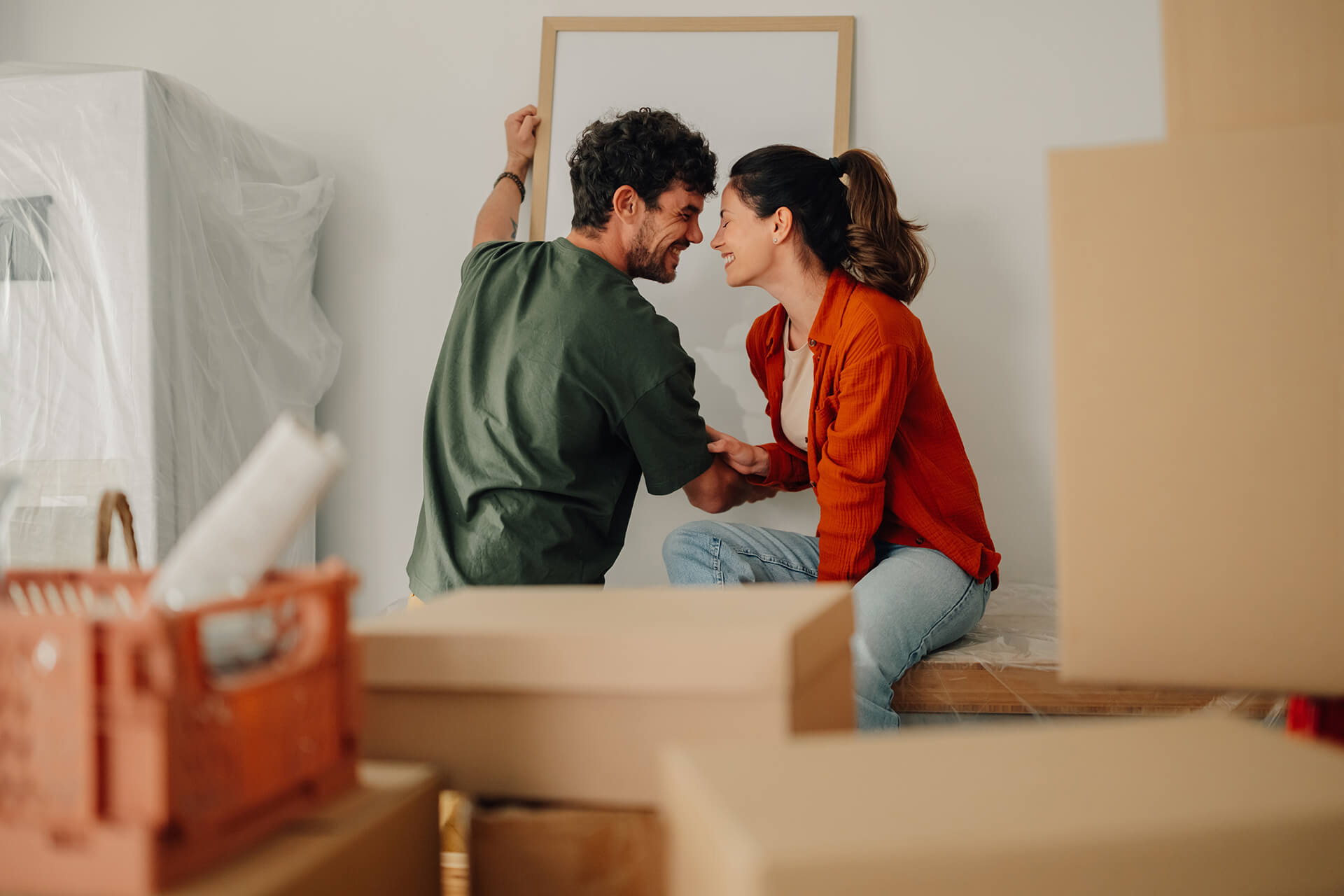
Mortgage & Home Loans
At WEOKIE we offer affordable, local financing with a range of fixed and variable mortgage rates to make your home buying experience stress-free.
Benefits of WEOKIE Home Loans
Low Mortgage Rates
As a not-for-profit Oklahoma-based credit union, we’re dedicated to offering you lower rates instead of earning a profit for shareholders.
Flexible Loan Terms
Everyone’s needs are different, so we meet you where you are with a wide selection of loan options and terms to fit your budget.
Mortgage Pre-Approval
Getting pre-approved means Realtors and Sellers will know you mean business and you'll be in a great position to compete in a hot housing market.
Options for Everyone
Get any type of home loan you need from fixed-rate to ARM, jumbo, first-time homebuyer, home equity loan, line of credit, or a refinance!
"I cannot even begin to tell you how awesome my experience has been so far. I don't usually feel compelled to write this kind of letter, but my entire experience with WEOKIE, especially Nikki and Chris has been exceptional. They have gone above and beyond during our home-buying process. They don't make me feel rushed, even though I know that they are very busy with other clients as well. They treat me like I really am family and that I matter. We are in the process of completing a home loan with you all and they have been extremely responsive, attentive, and on top of everything."
Josh M.
FAQs
WEOKIE offers flexible financing to purchase a home, refinance, or tap into your home equity. Our home loans include:
You should consider pre-approval because:
- Many realtors will not show you a home unless you're pre-approved. They want to know if you're serious about buying and that you have the ability to buy.
- Getting pre-approved tells you what price range you can afford, helps you evaluate the monthly costs of a mortgage, and let's see how much of a loan you can get.
- The pre-approval will give you some leverage when negotiating with the sellers.
Fill out this quick mortgage form to be taken to our mortgage center to learn more and get pre-approved today!
Yes! Our goal is to help you keep your hard-earned money in your pocket. If you have a home loan somewhere else, we may be able to reduce your monthly payments.
Be aware that when you refinance your first mortgage, you get a new mortgage to replace the old one – and that means a new set of closing costs. For an estimate of the closing costs, please contact a WEOKIE Mortgage Loan Officer at 405-235-3030 or 1-800-678-5363 or fill out this contact form and a rep will contact you.
You can view our current Auto Loan rates on the Loan Rates page of our website.
Another reason to finance your car with us is that we look beyond the numbers to the person filling out the application. We consider other factors beyond your current credit score when we review your application.
Yes, we can help you if you have an Individual Tax Identification Number (ITIN) rather than a Social Security Number (SSN). At WEOKIE we are committed to supporting everyone in our community in their financial journey. Learn more about ITIN Mortgage
Whether you're looking to purchase a home, refinance, or access home equity, WEOKIE has options for applying with an SSN or ITIN. We offer the same great products, affordable fees, and terms. If you're ready to get started, WE are ready to help you finance your next major purchase.
We know your time is valuable, so we’ve made applying for a WEOKIE home loan easy and convenient with our online application process. We have 13 locations and you can apply in person, at a branch, or over the phone by calling us at 405-235-3030 or 1-800-678-5363.
Our simple online application takes only about 15 to 20 minutes to complete. We’ll contact you – often the same day you apply – on the status of your pre-approval.
- Once you're pre-approved, you can contact a Realtor and start looking for your home.
- You can lock in an interest rate for up to 120 days while you are house hunting.
- Once you find a home and your offer is accepted, you need to formally apply for your home loan and then we check all your documents and credentials in the underwriting process.
- The underwriting and closing process may take around 30 days.
You can choose which type of home loan is right for your needs. Here's what to keep in mind:
- Fixed-rate mortgages may offer peace of mind because you know your rate and the monthly payment will stay the same for the life of the loan (apart from any changes in your taxes or insurance).
- The disadvantage is that you will have the same rate even if rates start to drop. In that case, to get a lower rate, you’d need to refinance your mortgage.
- Adjustable-rate mortgages give you a fixed rate for the initial period of your loan so your monthly payments are more affordable for the first years of your loan.
- That initial rate is often lower than what you can get with a fixed-rate mortgage and so an ARM is helpful when market rates are high, or if you plan to own your home for a short time only.
- The disadvantage of an ARM is that once your initial period is finished, your rate will adjust with the market and may go up or down.
The most common use for a home equity loan or home equity line of credit is to pay for major home renovations and remodeling. When you use the funds for home improvements, the interest you pay may be tax-deductible.
In addition, you can use a home equity loan or line of credit for:
- Car repairs
- Medical and dental bills
- New appliances
- Weddings and vacations
- Tuition
- Debt consolidation and much more!
PMI is private mortgage insurance, and you generally need to pay it if your down payment is under 20%. The PMI is designed to help the lender in case you can't pay your mortgage.
If your down payment is under 20%, there are other types of loans that offer ways to avoid paying PMI. For example, you can pay a higher APR in exchange for no PMI.
We offer a range of unique loans to cater to everyone's different needs, wants, lifestyles, and financial situations. If you don’t see what you’re looking for, please reach out to our mortgage loan team so they can assist you. You can fill out this mortgage form and a rep will contact you, or give us a call at 405-235-3030 or 1-800-678-5363
All properties secured by a mortgage require proof of homeowners insurance. If your property is located in a flood zone, we will require proof of flood insurance coverage too.
Note that you may change insurance companies, but you'll need to let us know anytime changes are made to the insurance coverage. Before you make any changes to your deductibles or coverage, contact us to see if there are any restrictions or limitations.
Loan amounts with a loan to value greater than 80% require an escrow account for the payment of real estate taxes and insurance. In this case, real estate taxes, homeowners' insurance, and PMI, if applicable, are added to the monthly payment and held in escrow. The tax and homeowners' insurance bills are sent directly to WEOKIE and paid by WEOKIE when due. With some exceptions, WEOKIE does not require an escrow account, and the taxes are paid by the borrower.
An escrow account is established to hold money collected by WEOKIE to pay your hazard insurance, property taxes and, if required, PMI insurance premiums when they are due. This is sometimes called an "impound account."
WEOKIE usually requires escrow payments every month to ensure that they have enough to pay the insurance and taxes for you. This is a way for WEOKIE to make sure its collateral is secure.
- Find out the current taxes from the county treasurer website or from the seller
- Find out your current homeowner’s insurance payments from your insurance agent
- If your loan requires PMI insurance, contact your WEOKIE Mortgage Loan Officer
The specific amount of your closing costs will vary. A home loan often involves many fees, including third-party fees, government fees, and lender fees along with escrows for taxes and hazard/homeowners insurance.
If you’d like more information, please contact a WEOKIE Mortgage Loan Officer. You can fill out this mortgage form and a rep will contact you, or give us a call at 405-235-3030 or 1-800-678-5363
Refinancing your mortgage will be easier than getting your original mortgage simply because you've been through the mortgage process before! You'll need many of the same documents this time, too.
First, choose your new loan type based on:
- Your income
- How much you still owe on your mortgage
- How much cash you might have to put down or how much cash you want to take out
- How long you're planning to stay in your home
- Whether you want a higher or lower payment
- What mortgage term best suits your needs
Next, apply online and get pre-qualified for your new mortgage with a likely new rate. If approved for pre-qualification, we move to the next steps:
- We'll process your application, verify all your documents, and request proof of income.
- We need to order an appraisal of your home and a title search to check for any liens, plus check your flood certification if needed.
- When all this is done, we complete the underwriting process to finalize your loan approval.
- Then we close on your new mortgage!
Disclosures
+ Show All- Home
- Home
- Mortgages
- Mortgages
- Mortgage Refinance
- Home Equity





